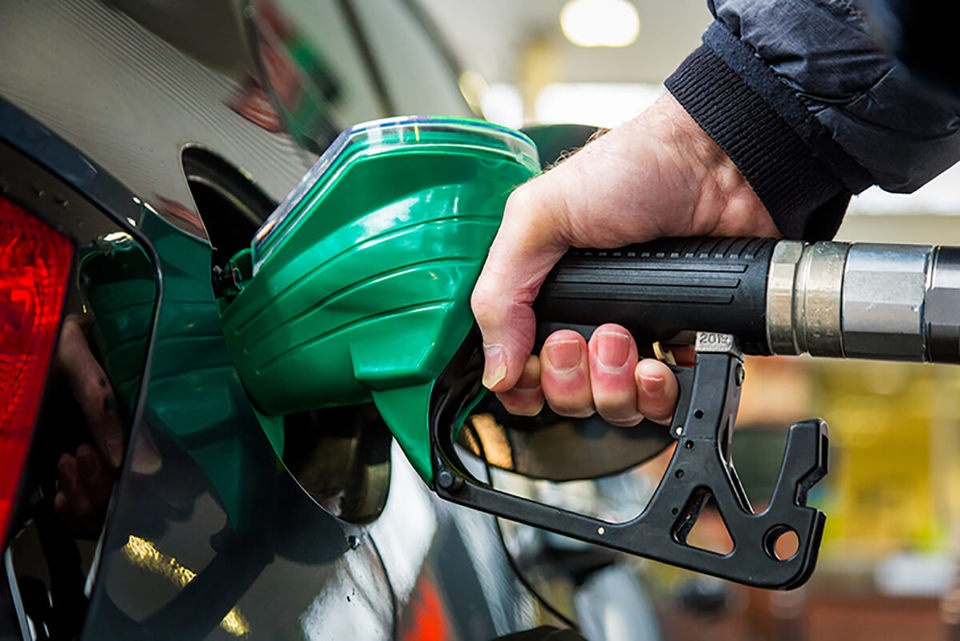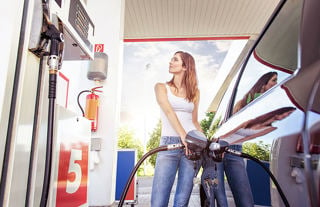The RAC estimates petrol car drivers were overcharged by £5 million a day during December, with retailers making an average of 16p a litre on petrol instead of the normal 6p.
Despite wholesale prices meriting big cuts at the pumps, the average price of petrol in the UK fell by just 2p a litre in December. RAC data suggests the price of unleaded should have come down by 12p a litre.
Unleaded dropped from 147.47p a litre to 145.48p when drivers should really have seen prices nearer to 135p had retailers played fair instead of taking far bigger margins than normal, it says.
Diesel dropped by just under 2p a litre from 150.80p to 148.92p when drivers should have been paying around 142p.
Instead of their long-term margin of 6p a litre, retailers took an average of 16p a litre on petrol and 12.5p on diesel in December, according to the RAC, making forecourt prices far more expensive than they would have been, had retailers not changed their fuel pricing strategy.
RAC fuel spokesman Simon Williams says that their resistance to cutting prices and to only pass on a fraction of the savings they were making from lower wholesale costs is “nothing short of scandalous”.
“In the past when wholesale prices have dropped retailers have always done the right thing –eventually – and reduced their pump prices,” continued Williams.
“This time they’ve stood strong, taking advantage of all the media talk about ‘higher energy prices’ and banked on the oil price rising again and catching up with their artificially inflated prices, which it has now done.
“The trouble is every extra penny they take as margin leads to drivers paying even more as VAT gets added on top at the end of the forecourt transaction. This means the Treasury’s coffers have been substantially boosted on the back of the retailers’ action. We urge ministers to push retailers into doing the right thing for consumers.”
The price of a litre of unleaded on the wholesale market, including delivery, averaged 106p across the month. Had a 6p margin been taken drivers would have seen an average petrol pump price of around 135p after applying VAT at 20%.
The average wholesale cost of delivered diesel was 112p a litre which, with the usual 6p retailer margin, would have given a pump price of around 142p, RAC data suggests.
This means it has cost petrol car drivers £6 more to fill up a typical 55-litre family car than it should have (£80 v £74) and for diesel nearly £4 more with a tank costing £82 at the end of the month instead of £78.
The RAC estimates retailers’ refusal to reflect lower wholesale prices at the pumps cost petrol car drivers a huge £156m in December, or the equivalent of £5m a day.
An analysis of RAC Fuel Watch data reveals Asda had the cheapest petrol at the end of the year with a litre costing an average of 141.81p at their stores, with Sainsbury’s not far behind at 142.57p.
Asda also sold the lowest priced diesel at 144.9p a litre ahead of Tesco on 145.8p.
The average price of motorway unleaded at the close of December was 160.55p while diesel was higher still at 163.43p.
Gordon Balmer, executive director of the Petrol Retailers Association (PRA), argued that December’s pump price data is less reliable because it is taken from fuel card transactions, and there have been far fewer of these transactions because of the reduction in business activity between Christmas and New Year.
"With pump prices falling towards the end of the month, car drivers travelling over the holiday period are likely to have benefited more than these figures suggest," he said.
“While the retail fuel market remains extremely competitive, supermarkets did not use artificially low fuel prices to lure shoppers into their stores at Christmas. The costs of running petrol stations rose all year, with electricity up 19%, vastly reduced margins from fuel cards, increased national insurance and wage inflation.
“The latest volume figures as supplied by BEIS (Business Energy and Industrial Strategy) reveal that for most of December volumes were running at 90% of pre pandemic levels, and for week ending 26/12/21 at 78%.
"When volumes fall and operating costs are rising, it makes sense for fuel retailers to raise margins if they are remain in business to serve their customers.”
























Login to comment
Comments
No comments have been made yet.